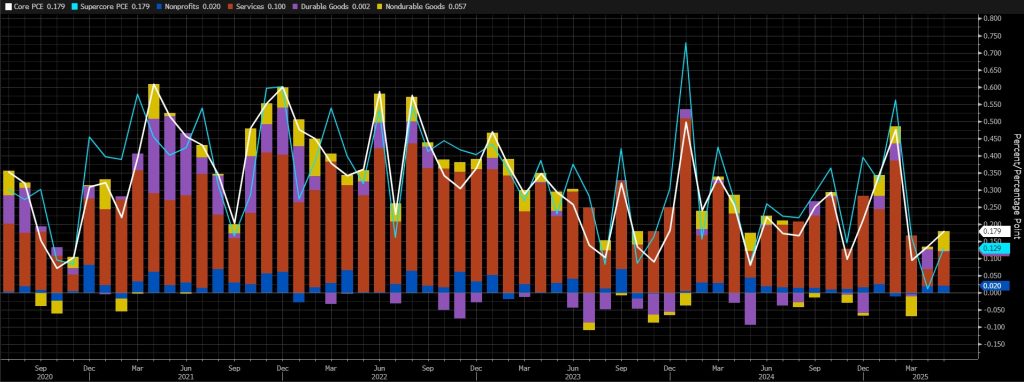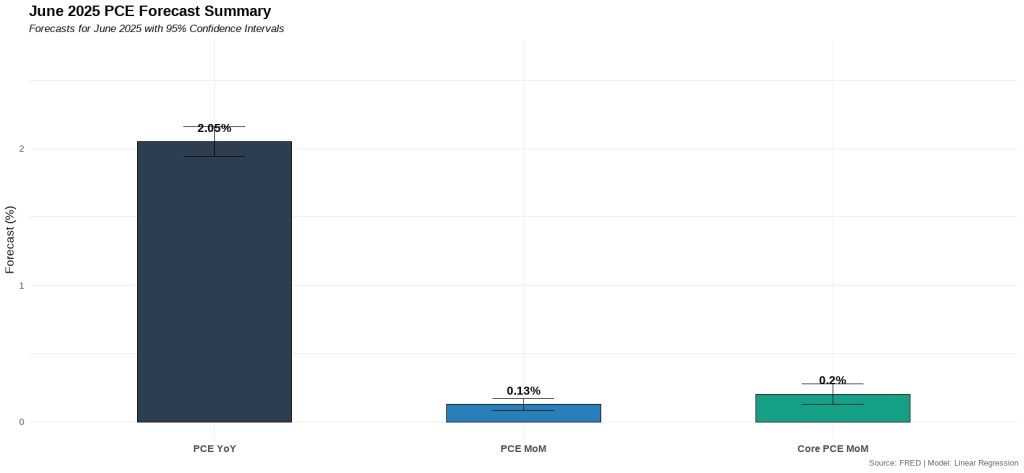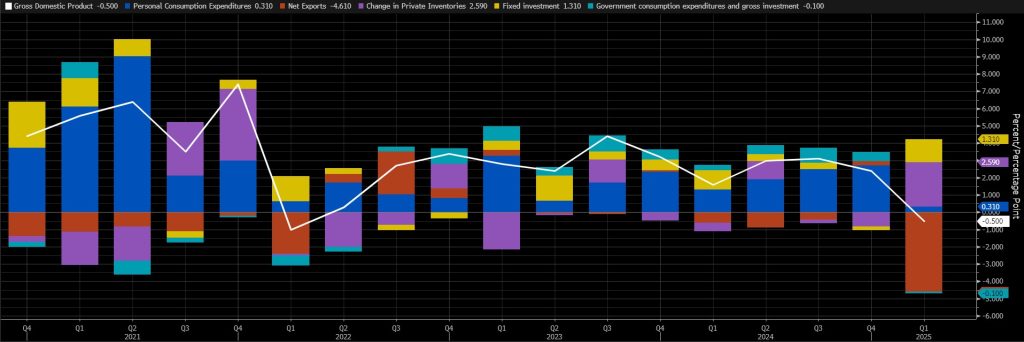Market Compass
Macro Agenda to Intensify
Last week, the digital investor community, which left behind a period defined as “Crypto Week” all over the world, led by the US, witnessed significant increases in crypto asset prices. In the aftermath of these gains, which were driven by expectations that the US legislature would approve three regulations, we witnessed relatively flat price changes and even losses due to the nature of the market. The main determinant in this period was the specific climate of the sector. As will be remembered, for a long period of time, we had an ecosystem driven by global macroeconomic developments and global dynamics.
Next week, participants in all different markets will once again focus on common developments. In addition to the economic data that will provide important insights into the health of the US economy, we will also be watching the results of the Federal Open Market Committee (FOMC) meeting. In this respect, the FOMC decisions and macro indicators that will determine the dose of global financial tightening in the coming months will be of great importance and we will open separate headings on these developments.
July 30 – FOMC Meeting
The US Federal Reserve’s (FED) fifth Federal Open Market Committee (FOMC) meeting of the year will be held on July 29-30 and the decisions will be announced on July 30. The FED is not expected to change its policy interest rate. However, what makes the July meeting important is that we may get clues about the timing of the rate cut.
On July 30, investors will be looking for clues in the FOMC statement that could lead to a major change in market expectations. The first thing to look for is whether the interest rate is left unchanged as expected. Half an hour after this decision and the text of the statement is published, Fed Chair Powell will step behind the lectern and hold a press conference.
Will the interest rate change?
Despite Trump’s pressure, after the recent developments and the statements of the FOMC members, according to the Bloomberg survey, a rate cut is not expected from the Board. There may be a surprise decision to cut interest rates, which we see as a very low probability. We define a rate hike as unlikely. According to the CME FedWatch Tool, a rate hike is almost certain. As for the September 17 FOMC meeting, at the time of writing, the probability of a 25 basis point cut in the policy rate was priced at around 58%. The main question in Powell’s speech will be whether there will be a rate cut at the next meeting.
Source: Bloomberg
Our base case scenario is that the Fed will end the year with a 25 basis point rate cut in December. Trump’s pressure for a rate cut is likely to intensify and his Fed appointees Chiris Waller and Michelle Bowman have said they would support a rate cut. However, the rest of the FOMC members think that the wait-and-see period should continue, especially since the latest employment report showed stronger-than-expected results and the uncertainty about the impact of Donald Trump’s tariffs on inflation remains. Our expectations that we will continue to see strong data in July’s employment report, our prediction that inflation will not be too innocent of tariff effects, and our assumption that the FOMC will continue to make rational decisions lead us to think that a hasty rate cut could be problematic.
Powell’s Press Conference
On July 30th, FED Chairman Jerome H. Powell will speak at a press conference, as he does after every FOMC meeting, half an hour after the decisions are published. Powell will first read the text of the decision and explain the reasons for the decisions taken. Then there will be a question and answer session where press members’ questions will be answered. Volatility in the markets may increase a little more in this part.
We do not expect a major change in the stance Powell has taken in his recent speeches. The chairman has maintained his stance that they need more data to get a clearer picture of the impact of the tariffs.
In the face of questions from the press, Powell’s more hawkish stance than before may strengthen expectations and pricing that the Fed will not be in a hurry to restart interest rate cuts. This may have some negative impact on digital assets. However, the FED’s assessments on economic growth and the labor market, as well as the need for further interest rate cuts, and the messages that more interest rate cuts may be made by the end of the year than the general expectations may increase the risk appetite, and this may have positive effects on cryptocurrencies.
July 31 – FED’s Favourite Inflation Indicator PCE
At the Federal Open Market Committee (FOMC) meeting in July, markets will be watching the Personal Consumption Expenditures (PCE) data for June closely for clues as to which of the following meetings will decide on a rate cut. This indicator is known as the preferred indicator for FOMC officials to monitor changes in inflation.
Source: Bloomberg
According to the latest data, core PCE increased by 0.2% in May compared to the previous month. On an annual basis, core PCE increased by 2.7%. In addition, the annual core data, which was previously announced as 2.5%, was revised to 2.6%. Our expectation is that core PCE data will increase by around 0.2% in June.
Source: Darkex Research
A higher-than-expected data may support expectations that the FED will maintain its cautious stance on interest rate cuts, reducing risk appetite and putting pressure on digital assets. A lower-than-expected data may pave the way for value gains with the opposite effect.
August 1 – US Employment Data
After leaving July behind, on August 1, the markets will be receiving the July Non-Farm Payrolls (NFP) data, which will provide clues about the tightness of the financial ecosystem in the coming period, which will provide information about the US Federal Reserve’s (FED) interest rate cut path. In addition, March figures such as average hourly earnings and the unemployment rate will also be monitored.
In June, the US economy added 147K jobs (Market Expectation: 111K).
Source: Bloomberg
Our forecast for the highly sensitive NFP data is that the US economy added 166K jobs in the non-farm sectors in July. At the time of writing, although the number of forecasts entered is small, we see that the consensus (median forecast) in the Bloomberg survey is more pessimistic, around 118K (Investors are advised to follow Darkex daily bulletins as this expectation figure may change later with the entry of new forecasts and surveys).
Source: Bloomberg
We believe that if the NFP data for July, which will be published in the shadow of Trump’s tariff-centered foreign policy, the deterioration that it may create domestically and the pressure created by his statements about FED Chairman Powell, is slightly below expectations, this will be priced as a potential metric that may create an expectation that the FED may act more boldly to lower the interest rate, thus increasing risk appetite and having a positive impact on financial instruments, including digital assets. We think that a slightly higher-than-expected data may have a similar but opposite effect.
Other Macro Indicators to be announced this week
July 29 – Job Openings and Labor Turnover Survey (JOLTS); Shows the number of job openings during the reported month, excluding the agricultural sector. This JOLTS data is closely monitored as job creation is an important leading indicator of consumer spending, which accounts for a large share of overall economic activity. It is released monthly and approximately 35 days after the end of the month. A lower-than-expected release is expected to have a positive impact on cryptocurrencies.
July 29 – CB Consumer Confidence; It is the result of a survey of approximately 3,000 individual consumers asking respondents to assess the relative level of current and future economic conditions. It measures financial confidence as a leading indicator of consumer spending, which accounts for a large share of overall economic activity. It is published monthly, on the last Tuesday of the current month.
July 30 – ADP Non-Farm Employment Change; shows the estimated change in the number of people employed in the previous month, excluding the agricultural sector and government, by analyzing payroll data from more than 25 million workers to obtain estimates of employment growth by Automatic Data Processing, Inc (ADP). It usually gives a hint of employment growth 2 days before the employment data released by the government. Usually, lower-than-expected ADP data has a positive impact on digital assets.
July 30- US GDP Change; Donald Trump’s unpredictable policy choices have been a challenging factor for the whole world. Economic actors have also experienced the challenges of this highly uncertain environment as they build their expectations and plan for the future. There are some outcomes of this situation. The most important one is the slowdown in economic activity… In this respect, it will be important to see how much the US economy grew in the second quarter of the year. According to the Bureau of Economic Analysis, which compiles this statistic, the US economy contracted by 0.5% in the first quarter of 2025 (previous estimate for the period was -0.2%), reflecting the consequences of Trump’s unpredictable policies. This was the first decline since the first quarter of 2022.
This weak figure was primarily due to downward revisions in consumer spending and exports.
Source: Bloomberg
The new data will be the first estimate for the second quarter of the year and is important in this respect and will show the impact of Trump (tariffs and FED pressure) and the effects of the tension in the Middle East during the period on consumer behavior or how much the effects of these variables have softened. Our forecast is for the US economy to regain a growth rate of at least above 1% in the relevant period.
In terms of immediate price reaction, we think that a data above the consensus expectation may increase risk appetite and have a positive impact on digital assets. A lower-than-expected GDP data, on the other hand, may have a negative impact from this point of view.
August 1 – ISM Manufacturing PMI; The Purchasing Managers’ Index (PMI) is a diffusion index based on surveyed purchasing managers in the manufacturing industry. Conducted by The Institute for Supply Management (ISM), this survey of approximately 300 purchasing managers asks respondents to assess the relative level of business conditions, including employment, production, new orders, prices, supplier deliveries and inventories. It is usually published monthly on the first business day after the end of the month, with a score above 50.0 indicating that the sector is expanding and below 50.0 indicating contraction. In general, a lower-than-expected ISM Manufacturing PMI is expected to have a positive impact on digital assets by pricing in expectations regarding the monetary policy course of the US Federal Reserve (FED). However, in some cases, it may also lead to pricing based on the strength of the economy. In this case, figures above expectations have a positive effect on digital assets.
*General Information About Forecasts
In addition to the general market expectations, the forecasts shared in this report are based on econometric modeling tools developed by our research department. Different structures were considered for each indicator, and appropriate regression models were constructed in line with data frequency (monthly/quarterly), leading economic indicators and data history.
The basic approach in all models is to interpret historical relationships based on data and to produce forecasts that have predictive power with current data. The performance of the models used is measured by standard metrics such as mean absolute error (MAE) and is regularly re-evaluated and improved. While the outputs of the models guide our economic analysis, they also aim to contribute to strategic decision-making processes for our investors and business partners. Data is sourced directly from the FRED (Federal Reserve Economic Data) platform in an up-to-date and automated manner, so that every forecast is based on the latest economic data. As the research department, we are also working on artificial intelligence-based modeling methods (e.g. Random Forest, Lasso/Ridge regressions, ensemble models) in order to improve forecast accuracy and react more sensitively to market dynamics. The macroeconomic context should be taken into account in the interpretation of model outputs, and it should be kept in mind that there may be deviations in forecast performance due to economic shocks, policy changes and unforeseen external factors. With this monthly updated working set, we aim to provide a more transparent, consistent and data-driven basis for monitoring the macroeconomic outlook and strengthening decision support processes.
Important Economic Calendar Data
Click here to view the weekly Darkex Crypto and Economy Calendar.
Information
*The calendar is based on UTC (Coordinated Universal Time) time zone.
The calendar content on the relevant page is obtained from reliable data providers. The news in the calendar content, the date and time of the announcement of the news, possible changes in the previous, expectations and announced figures are made by the data provider institutions.
Darkex cannot be held responsible for possible changes arising from similar situations. You can also check the Darkex Calendar page or the economic calendar section in the daily reports for possible changes in the content and timing of data releases.
Legal Notice
The investment information, comments and recommendations contained in this document do not constitute investment advisory services. Investment advisory services are provided by authorized institutions on a personal basis, taking into account the risk and return preferences of individuals. The comments and recommendations contained in this document are of a general type. These recommendations may not be suitable for your financial situation and risk and return preferences. Therefore, making an investment decision based solely on the information contained in this document may not result in results that are in line with your expectations









